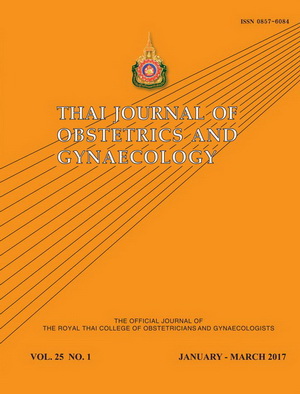Multimodal Pain Management for Laparoscopic Adnexal Surgery: A comparative cohort study
Main Article Content
Abstract
Objectives: To determine the morphine-sparing effect of multimodal pain management for laparoscopic surgery.
Materials and Methods: A retrospective cohort study was carried out in 210 patients who underwent laparoscopic adnexal surgery from August 2008 to November 2013 at the Songklanagarind Hospital. The patients were divided into three groups (n = 70 each) according to analgesic management. Group I received parecoxib 40 mg intravenously 2 hours preoperatively with postoperative paracetamol/NSAIDs around the clock, Group II received parecoxib 40 mg intravenously 15-30 minutes preoperatively with postoperative paracetamol/NSAIDs as needed, and Group III received only postoperative paracetamol/NSAIDs as needed. Morphine or fentanyl was used during operation and morphine was used as needed for severe postoperative pain in all cases. Patients in each group were matched by the operation in the same time period. The consumption of analgesic agents during surgery and 24 hours postoperation, pain scores, and adverse events were evaluated.
Results: Intraoperative morphine consumption was not different among the 3 groups. However, in the 24 hours postoperation, 40% of patients in Group I received morphine (mean 1.1 mg) compared to 68.6% in Group II (mean 6.1 mg) and 80% in Group III (mean 9.6 mg) (p < 0.01). Group I received more postoperative paracetamol/NSAIDs than both Group II and Group III (p < 0.01). Group I had 88.5% morphine-sparing effect compared to Group III and 82% compared to Group II. The pain scores were similar between the groups.
Conclusions: Preemptive parecoxib and postoperative paracetamol/NSAIDs provide a significant morphine-sparing effect in laparoscopic adnexal surgery.

